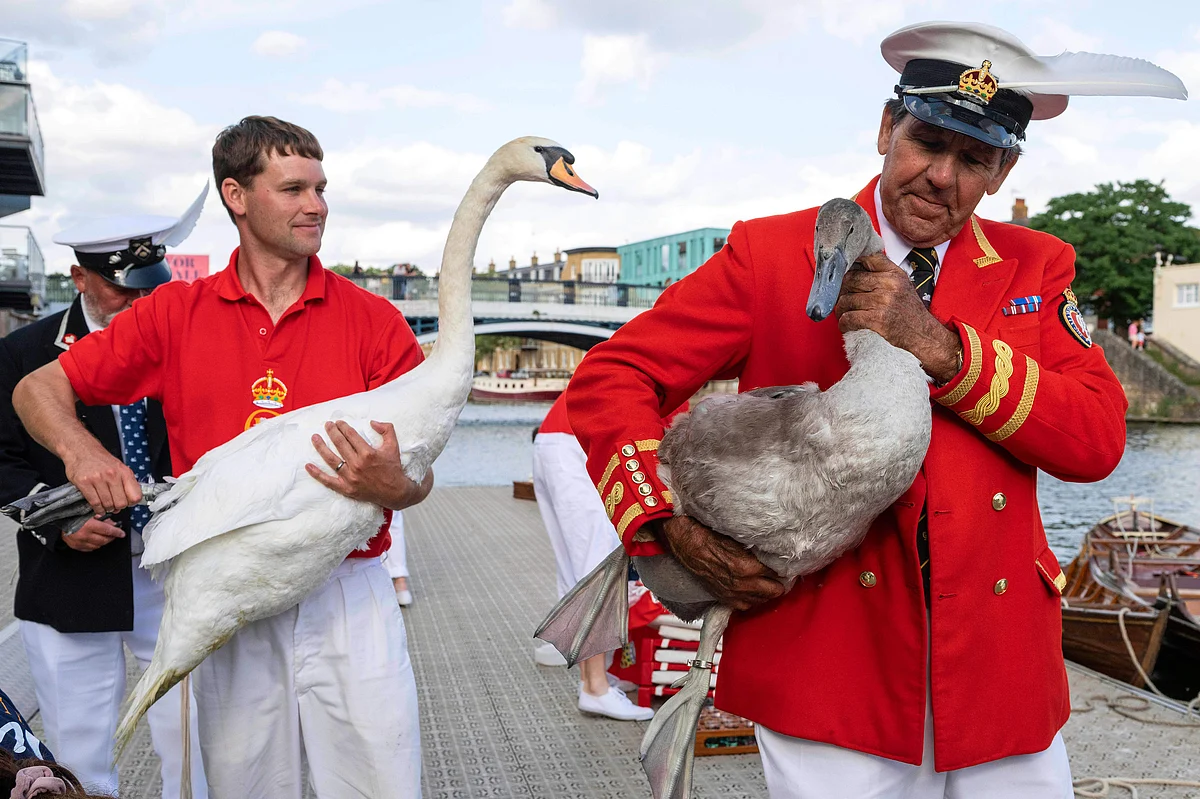Britain's royal swan counter feels 'positive' as Thames population holds steady
The five-day census of swans belonging to King Charles III – known as Swan Upping begins

Scarlet uniforms and wooden skiffs returned to the River Thames this week as Swan Upping — the centuries-old royal swan census — began its annual five-day journey. The event, led by King Charles III’s Swan Marker David Barber, monitors the health and population of mute swans, a species legally protected and traditionally considered royal property.
Dating back to the 12th century, Swan Upping once helped track swans for royal feasts.
Today, it serves a vital conservation role. Oarsmen dressed in red for the king, white for the Worshipful Company of Vintners, and blue-striped for the Worshipful Company of Dyers row upriver from Sunbury to Abingdon. When swan families are spotted, the call “All up!” signals the crews to encircle the birds for health checks and tagging.
Barber, who has led the tradition for over 30 years, says the census offers insight into national swan health. Numbers have dropped in recent years due to avian flu, with only 86 cygnets counted in 2024—a 45% decline from the previous year. But with 16 young swans already recorded on the first day, hopes remain high for this year’s count, which runs through Friday.
Sign up for the Daily Briefing
Get the latest news and updates straight to your inbox
Network Links
GN StoreDownload our app
© Al Nisr Publishing LLC 2025. All rights reserved.